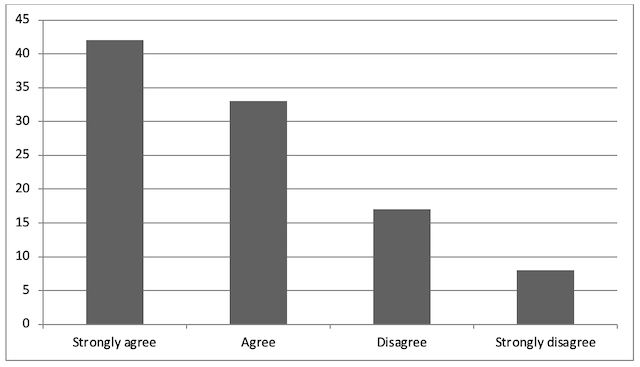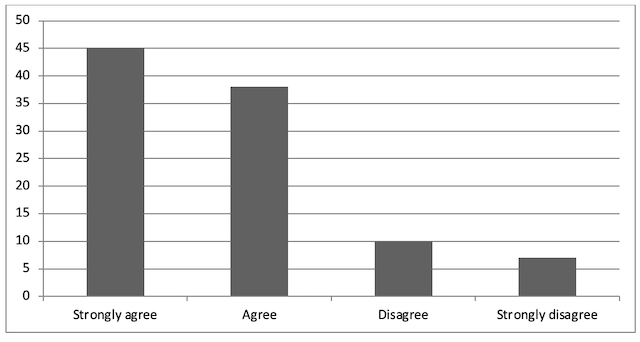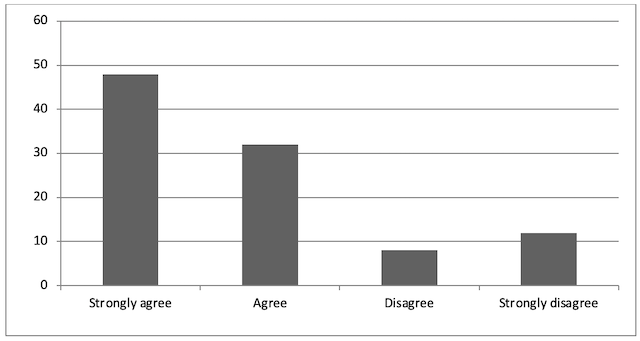Introduction
Assessment is considered the backbone of education due to the key role it plays in the learning process. Ensuring effective learning implies the use of a myriad of alternatives in assessment methods which strive to equip learners with the required competence and skills that they need. Peer assessment is deemed to be one of the most important and efficient alternative assessment methods which can substantially result in a high learning quality.
Peer assessment is an alternative assessment procedure which helps learners develop their higher-order learning. (Berry, 2008, p. 81) Improving learners’ higher-order skills signifies that peer assessment is underpinned by the deep learning approach which requires constructing and producing knowledge involving in that activating the learners to their whole cognitive and meta-cognitive skills.
Peer assessment helps learners considerably to have a clear-cut image of the way assessment is done. Thanks to peer assessment, learners become acquainted with the set of criteria followed in evaluating the level of their work as they can succeed in the assessment through following rigorously the task criteria. Different tasks require meeting their specific criteria the case with writing skills which imply attending to its pre-determined rubric of standards aiming at improving EFL learners’ competence in this skill.
Learners’ writing can be ameliorated significantly through peer assessment only in the presence of certain conditions and away from hindrances which may impede the assessment process. To this point, this study aims at diagnosing the problems which hinder the implementation of peer assessment concerning writing in middle school. Accordingly, the big question of this paper arises here: What are the challenges which prevent middle school pupils from assessing their peers’ writing work?
1. Literature Review
1.1. Peer Assessment
Topping (2009) describes peer assessment as “an arrangement in which individuals consider the amount, level, value, worth, quality, or success of the products or outcomes of learning of peers of similar status” (p.20). Accordingly, peer assessment is concerned with the qualitative and quantitative evaluation of one’s peers. Qualitative peer assessment is drawn upon providing feedback which helps in refining learning. However, quantitative peer assessment focuses on giving grades without raising learners’ attention to their strengths as well as weaknesses. In this very sense, aiming at assuring effective learning through peer assessment implies adopting the qualitative view and not vice-versa.
It is quite necessary to integrate peer assessment in the contemporary classroom which is adopting the constructivist learning approach. The latter aims at engaging learners in constructing knowledge and competencies they need in the long run. According to the social constructivist view, “knowledge is a social product which is constructed through social interaction.” (Prichard & Woollard, 2010, p. 9) Put differently, when learners are involved in peer assessment, a kind of socialization gets created and developed in the classroom. This is manifested in sharing viewpoints, discussing together, helping each other and planning as a single social group for achieving success.
Handling assessment from the learners’ part promotes self-directed learning (Harrison et al, .2015). Consequently, learners become wholly dedicated to their learning, conscious enough about its process, and able to address all those learning issues they may confront. It is worth noting that self-directed learning is one of the key constituents of learner autonomy; hence peer-assessment results in autonomous learners who are responsible for their assessment process. (Havnes & McDowell, 2008; Birenbaum, 1996)
Peer assessment is also vital for encouraging cooperative learning (Brown, 2003, p. 270). In this regard, learners’ engagement in peer assessment makes them aware of the importance of collaboration that results in substantial benefits which are, mainly, mirrored in reflecting upon one another’s work in addition to giving and receiving feedback from one’s peers to improve. Besides, learners are more engaged and motivated in performing peer-assessment tasks in the classroom that supports cooperative learning.
Promoting the implementation of peer assessment is also helpful to teachers. By boosting the use of peer assessment, teachers get a thorough understanding of their students’ learning as well as contribute to enhancing deeper learning (Berry, 2008). In other words, peer assessment enables teachers to find out so much about how their learners construct learning cognitively, meta-cognitively, etc. Besides, teachers’ promotion to peer assessment encourages their learners to develop deep learning which is not based on memorization and discrete language learning, but on the construction of knowledge and skills. Moreover, teachers’ workload is to be decreased markedly since their learners are the ones who are in charge of the assessment task.
1.2. Peer Assessment Characteristics
There are some key characteristics and principles which underlie peer-assessment implementation. The major ones are related to feedback, criteria of success and following guidelines. If these principles are amalgamated together, the implementation of peer assessment would be effective resulting in substantial benefits for learners
1.2.1. Feedback
To yield effective peer-assessment results, extensive feedback on the part of the learner is enormously required. In this line of thought Brockbank and McGill (1998) claim that “Where the feedback process is driven by the learners’ enquiry, through critical reflection, their focus becomes the progress they are making towards the intended learning outcomes of the unit of study” (cited in Robinson& Udall,2006, p. 93). Peer feedback outperforms teacher feedback when it comes to promoting critical reflection that helps learners to improve learning (Heritage, 2010, p. 13). To improve learning, Heritage (2010) asserts that feedback from any source (teacher/peer) needs to acknowledge successes “toward meeting the learning goal and suggesting ways in which the gap between current learning status and the goal can be closed”. (p.99). Precisely, peer assessment enhances learners’ ability to find their peers’ learning gaps and propose effective ways to address them. To arrive at meeting this end, learners’ feedback must be positive since only this way can predict a higher performance of one’s assessed peers (Lu& Law, 2011). In the same vein, effective feedback reviews engage learners in appealing to and applying criteria which go in parallel with the assessment of a given task to explain their judgments (Nicol et al, 2014).
The effective implementation of peer feedback requires an especially comprehensive and constructive critique protocol called the Ladder of Feedback (Perkins, 2003, cited in Andrade &Heritage, 2018, pp. 92–94). This protocol has four steps. The deliverer of the feedback: (1) asks questions of clarification about the other student’s work, (2) identifies aspects of the work that he or she values, (3) raises concerns about the work, and (4) offers suggestions for ways in which the work could be improved. The following figure illustrates clearly this ladder of feedback.
Figure N° 1. Ladder of Feedback
Source: Perkins, 2003, in Andrade &Heritage, 2018
According to Perkins (2003, cited in Andrade&Heritage,2018, pp. 94–95), the first step of the ladder, clarifying, is fundamental since asking questions about unclear points or absent ideas helps students gather relevant information before informed feedback can be given. The second step of the ladder, valuing, is considered useful for constructive feedback since it helps students identify strengths in their work they might not have recognized otherwise. The third step is the time to raise honest thoughts and concerns. “Have you considered …?”, “What I wonder about is…”, “Perhaps you have thought about this, but…” are all ways of framing concerns in non-threatening ways. This step can be combined with the fourth. Giving suggestions for solving the problems identified during the Concerns step can help a learner use the feedback to make improvements and deepen learning.
1.2.2. Criteria and Guidelines Consideration
Peer assessment is based on setting criteria for evaluating any learning task. So, it is significant to make “learning goals and assessment criteria transparent for learners” (Havnes & McDowell, 2008, p. 7). To implement effective peer assessment in the classroom, it is of paramount importance for teachers to set and clarify assessment criteria to learners so that they can succeed in evaluating their peers’ work. In this regard, peer assessment revolves around meeting learning criteria and excludes grading that may result in negative results. To this view,
The value of self-and-peer assessment is that students internalise academic standards and are subsequently able to supervise themselves as they study and write and solve problems, in relation to these standards. It is the act of students making judgements against standards that brings educational benefits, not the act of receiving a grade from a peer. (Gibbs 2006, p. 27)
Clearly stated, Gibbs (2006) emphasizes the fulcrum of peer assessment which lies in considering assessment criteria at first before embarking on the assessment of any task. With regard to writing, there are specific criteria to be rigorously followed and included in a rubric which best identifies them. The remarkable writing standards which can be found in any writing rubric are interwoven with relevance, cohesion and coherence, and accuracy. So, before engaging learners in assessing their writings, they must be equipped with the writing rubric which has to be well-explained to them by the teacher.
-
To ensure effective peer assessment, in this case, the writing skill, Brown (2003, p. 277) proposes the following guidelines Telling students the purpose of assessment: The teacher must analyze the needs that will be met throughout self-and peer assessment and then convey them to learners.
-
Defining the task clearly: The teacher needs to provide learners with the appropriate guidelines and models like questionnaires and checklists to make the task easy.
-
Encouraging impartial evaluation of performance or ability: Since peer assessment is a subject to unreliability, the teacher, in such a case, must define clear assessment criteria for students to follow to assure objectivity.
-
Ensuring beneficial wash-back through follow-up tasks: It is of paramount importance to guarantee effective wash-back by using different follow-up tasks such as journal feedback, written feedback from the teacher, conferencing, etc.
2. Methodology
-
Context: This research took place in one of the middle schools that exist at the level of Mascara (Algeria) during the second trimester of the academic year 2019–2020. Fourth-year middle school learners formed the population that the research findings would be generalized on. This research aimed at diagnosing the main obstacles that prevent middle school learners from implementing peer assessment in writing classes. It is apt here to state the research question and hypothesis. At its fulcrum, this study aimed at answering the following question
-
What are the major obstacles that prevent middle school learners from implementing peer assessment in writing classes?
-
Based on the belief that middle school learners may face a multitude of problems that militate against the effective implementation of peer assessment in writing, the following hypothesis came forward
-
There exist a range of obstacles that may affect middle school learners’ use of peer assessment in writing such as the lack of practice, ignoring how to give feedback, ignoring rubrics, and others.
-
Participants: As far as the participants are concerned, 60 fourth-year middle school learners, 35 females and 25 males from Mascara (Algeria) formed the sample of the study. The participants were selected randomly to give an equal chance to every learner to be a part of the investigation.
-
Instrument: The questionnaire was the data collection instrument used in this research to find out the obstacles that hinder middle school learners’ use of peer – assessment in writing classes. The questionnaire comprised five items on a 1 to 5 Likert scale ranging from strongly agree to strongly disagree.
3. Results
This part of the research revolves around analyzing the main results obtained from the questionnaire that focused on the problems that impede middle school learners’ application to peer assessment in writing classes.
Item 1: The lack of peer assessment practice prevents me from assessing my peers’ writing work.
Figure N° 2 The Lack of Practice Effects on Peer-assessment
This figure shows that learners in the majority (50%) strongly agree that the lack of peer-assessment practice does not help them in assessing their peers’ writing. (20%) of learners agree. However, (13%) disagree and (17%) strongly disagree.
Item 2: Ignoring the rubric’s criteria prevents me from assessing my peers’ writing work.
Figure N° 3 Ignoring Rubric’s Criteria Effects on Peer-assessment
The results demonstrate that learners in the majority (40%) strongly agree that ignoring the rubric’s criteria does not help them in assessing their peers’ writing. (35%) of learners agree. On the other side, (10%) of the respondents disagree and (15%) of them strongly disagree.
Item 3: Teacher assessment prevents me from assessing my peers’ writing work.
Figure N° 4. Teacher-assessment Effects on Peer-assessment
It is plain enough from the figure, above, that the majority of respondents (42%) strongly agree that teacher assessment hampers their implementation of peer assessment. (33%) agree whereas (17%) of the participants disagree and (8%) of them strongly disagree.
Item 4: My low competence in writing prevents me from assessing my peers’ writing work.
Figure N° 5. Learners’ low Competence in Writing Effects on Peer-assessment
As this figure displays, (45%) of the participants strongly agree that their low competence in the writing skill prevents them from implementing peer-assessment. (38%) of learners agree. On the other hand, (10%) of the participants disagree and (7%) strongly disagree.
Item 5: Ignoring how to give feedback prevents me from assessing my peers’ writing work.
Figure N° 6. Feedback Effects on Peer-assessment
It is fairly clear from this figure that the respondents in their majority (48%) strongly agree that ignoring how to give feedback prevents them from assessing their peers’ work in writing. Also, (32%) of them agree about the same point. On the other side, (8%) of the respondents disagree and (12%) strongly disagree.
4. Discussion
The results of the questionnaire demonstrated that there is a range of obstacles that prevent middle school learners from implementing peer assessment in writing classes. The questionnaire data, as far as the first item is concerned, strongly confirmed that the lack of practice impedes the majority of learners’ implementation of peer assessment. Indeed, the lack of practice inside and outside the classroom is a barrier which does not promote the use of peer assessment. Also, the questionnaire data affirmed that learners are surrounded by another big barrier which is ignoring rubrics’ criteria as the second item results display. In fact, not having sufficient information about the writing rubric’s criteria leads to avoiding peer assessment since the latter is based fundamentally on it. In addition, the data proved that teacher assessment is a thorny problem which impedes learners’ peer assessment. In this sense, the teacher’s demotion to the peer-assessment practice deprives learners of the opportunity to approach assessment themselves. Moreover, the findings demonstrated that learners’ low writing competence is a major challenge which prevents the majority of learners from assessing their peers’ writing. Last but not the least, the data proved that ignoring how to give feedback to one’s peer forms a terrible obstacle in the learners’ way towards peer assessment. This is true to the point that feedback is a strong pillar of peer assessment and the latter cannot be implemented successfully without it.
Conclusion
This study aimed at diagnosing the key problems that militate against middle school learners’ implementation of peer assessment in writing classes. The questionnaire data revealed that these major hindrances are related basically to the learners’ lack of practice, ignoring how to use rubrics, teacher assessment, the learners’ low writing competence, and ignoring how to give feedback. Accordingly, middle school learners as well as their teachers need to take several action steps towards addressing the aforementioned obstacles. Here are some recommendations that may help in fostering the implementation of peer assessment in writing classes
-
Extensive Practice in Peer-assessment: “Practice makes perfect” Achieving effective peer assessment entails extensive practice inside and outside the classroom. To reach such an objective, English teachers need to encourage their learners to assess their peers’ writing in writing courses as well as in Tutorial sessions. The latter can be extremely helpful in reinforcing the use of peer assessment for the small number of pupils in such group-work classes. Middle school learners must be also motivated to practice peer assessment outside the classroom to strengthen their use of the procedure.
-
Showing Learners how to Give Feedback: Implementing effectively peer assessment in writing requires giving constructive feedback to one’s peers. Middle school learners may ignore giving their peers feedback when assessing their writing works. Hence, English teachers must help their learners by providing qualitative feedback through the use of Perkin’s ladder of feedback which can be very helpful in such a case.
-
Using peer-assessment Rubrics: The implementation of peer assessment in writing entails the use of rubrics since they are the only tool that defines the specific assessment criteria to be integrated into the writing text. However, middle school learners may ignore how to use rubrics, and here English teachers have to show their learners how to use writing rubrics step by step through examples which illustrate well the process. Added to that, teachers need to provide continuous guidance to learners when they are exposed to peer-assessment tasks since it is not that easy for those pupils to follow thoroughly the writing criteria.
-
Improving Learners’ Writing Skill: Having a good writing ability is a prerequisite for assessing one’s peers. In this sense, learners need to work hard to be good writers. They need to give a good proportion of their time to writing to have command over the different writing conventions such as mechanics, cohesion/coherence, and relevance. Reading can also be a good source to improve one’s writing since texts are full of a wide range of vocabulary, grammatical structures, etc. Teachers can help their learners in improving their writing skills by giving them assignments to do and arranging extra writing sessions in their schedule to make them write extensively.






